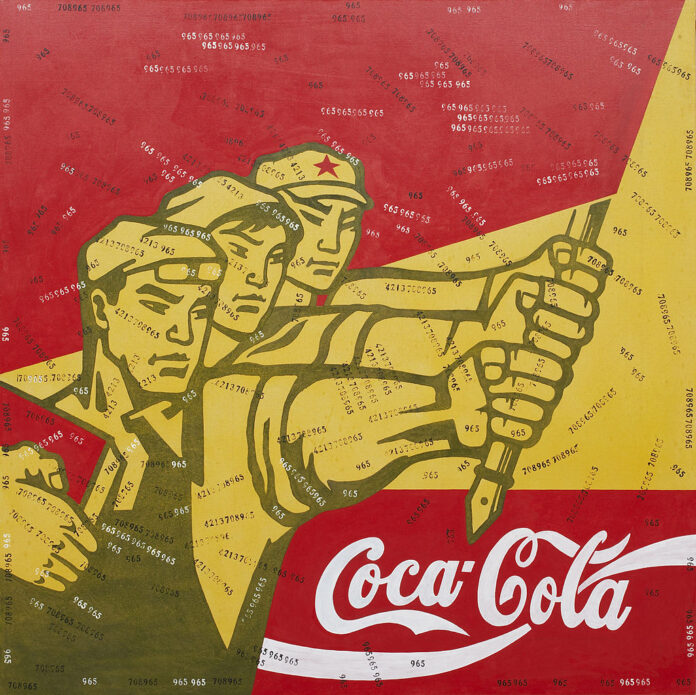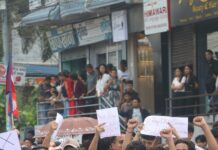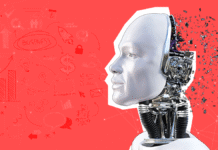This is the second in a two-part article by Per-Åke Westerlund looking at the rise of Chinese imperialism. The first part China’s state capitalist imperialism was published on 5 April.
As the imperialist conflict between the US and China has sharpened in recent years, some layers of the left internationally have adopted an ever more uncritical attitude to the CCP (so-called Communist) regime, denying its repression at home and exploitation abroad for example in the countries of the Belt and Road Initiative (BRI).
Most of the economic facts in part one of this article would not be questioned by “left” supporters of the Chinese regime. They defend the Chinese regime’s de facto imperialist actions as either forced upon it, or claim these actions benefit ordinary people in the countries involved. These commentators, usually from a Stalinist or Maoist political background, are also known as “tankies”, having supported the tanks sent against workers in Hungary 1956, Beijing 1989 and more. Despite capitalist restoration in both Russia and China, tankies believe there is something “progressive” in these regimes today.
The CCP apologists had a hard time when Chinese leaders seemed to get along very well with US presidents and foreign multinationals. Xi Jinping got a standing ovation when speaking in the Australian parliament in 2014. A year later, the then British prime minister David Cameron spoke about the “golden era” of UK-China relations. In 2015, Xi Jinping rode with Queen Elizabeth in a horse-drawn carriage and described Tory Britain as China’s “best friend in the West”, while George Osborne, the British finance minister, led a trade delegation to Xinjiang and won praise from China’s state-controlled media for speaking only of business opportunities and saying nothing about mistreatment of Uighurs or other minorities. And as late as in the beginning of 2020, Donald Trump praised Xi as a close friend. None of this can be explained by the tankies, who now claim Beijing is on the frontline of the struggle against US imperialism.
While capitalist politicians and economists have been welcomed to China, socialists and anyone trying to connect with fighting workers and young people have been arrested or deported. This is because real socialists and Marxists, in the same tradition as Marx, Luxemburg and Lenin, stand against all capitalist governments and imperialist powers. In his book Imperialism, Lenin made an important point of stressing that even Tsarist Russia was a developing imperialist power, although Britain, France, the US and Germany were more advanced. In his 1920 foreword, Lenin underlines Russia’s oppression of “Finland, Poland, Courland, the Ukraine, Khiva, Bokhara, Estonia or other regions peopled by non-Great Russians” as well as explaining that in writing the book in 1916 he had used the example of Japanese imperialism instead of Russia to avoid Tsarist censorship.
Today, tankies and CCP apologists claim the deported or arrested, and those supporting them, can’t really know the facts. That in itself is an admission of the role of the dictatorship and its methods to suppress the truth. They also claim that socialists can’t use liberal, bourgeois or public service media as sources. In fact, the argument that all reports in mainstream capitalist media are CIA propaganda is often the only argument of CCP supporters. So what is the Marxist tradition? Karl Marx never hesitated to quote bourgeois papers, for example conservative British press reporting about the repression of the counter-revolution after the defeat of the Paris Commune. Marx himself was for ten years correspondent for New York’s largest newspaper, the Tribune, which was linked to the Republican Party. Marxists have no illusions in the impartiality of the capitalist media and likewise China’s regime-controlled media – it is a question of studying the facts and sources critically.
The criticism from tankies today is nothing compared to the campaigns of the Stalinist-led Communist Parties against Leon Trotsky in the 1930s. His scientific criticism of Stalin’s dictatorship was equated with that of right-wingers and even Nazis. They kept totally silent over the class difference – bourgeois critics wanted a capitalist counter-revolution while Trotsky’s programme was for a new workers’ revolution to establish a democratic socialist workers’ state. This fundamental class division, however, did not mean that right-wingers had only imagined the Gulag labour camps. Tankies criticise where quotes originate from, while the real discussion is about their support for Stalinist, Maoist, and today state capitalist regimes.
China’s apartheid in Xinjiang
The huge network of concentration camps, disappearances, torture, rape and more in Xinjiang, directed against the Uighur and mostly Muslim population, are not made up, but are the harsh reality. The increased oppression of Uighurs unfolded parallel with China’s capitalist restoration and Chinese imperialism. Xinjiang’s natural resources and strategic location, key components in Xi Jinping’s BRI, combined with fear of opposition from the non-Han population gave rise to a new level of repression from Beijing against Xinjiang/East Turkestan.
Up to the 1950s, the Han population in Xinjiang was less than five percent. This changed with capitalist restoration and exploitation in the 1990s, when millions of Han migrants arrived. Today, Uighurs, approximately 12 million people, are less than half the population in Xinjiang, while Han are over 40 percent.
CCP rule in Xinjiang means, “implementation of a pass-book system, the building of internment camps, the infrastructure of a police grid system of control, [which] mirrored attempts in Apartheid South Africa and Israel to systematically control undesired minorities”, writes academic Darren Byler, who lived for two years in Ürümqi and has kept studying Xinjiang. Another turning point was the War on Terror declared by George W. Bush after 9/11. The CCP rapidly adopted the West’s rhetoric and branded Uighurs collectively as suspected terrorists.
An article in the US left journal Monthly Review, claiming that those reporting on camps and repression in Xinjiang were supporting US imperialism, drew a strong reply from Byler and 35 other academics internationally. The reply said China’s policies were “a deliberate appropriation of Western counterterror practices”, and that both should be condemned as well as Islamophobia in both the US and China.
This reply also clearly pointed at the capitalist roots of Beijing’s policies: “The link here between capitalist expansion and the oppression of indigenous communities is one the left has long been familiar with. To fail to recognize and critique these dynamics in this case is a form of wilful blindness.” Byler himself stated in an interview that he is “deeply critical of American militarism”. He describes China as state capitalist and the system in Xinjiang as “terror capitalism”. The Xinjiang government accused Byler of being a “CIA agent”. This is an accusation often thrown by Chinese nationalists and sometimes by their foreign supporters against anyone who criticises Xi’s regime including Chinese feminists and labour activists.
A key turning point in Xinjiang’s modern history were the riots of July 2009. These were triggered by the racist murders of two Uighur migrant workers at a factory in Guangdong province. Days later an initially peaceful demonstration of Uighur youth in Ürümqi, marching behind the PRC flag and calling for an investigation into the Guangdong killings, was fired upon by armed police. The roots of the rioting were increased repression and discrimination, such as Chinese replacing Uighur to become the only language in schools, land grabbing of Uighur land, and rules on religious practice and dress code.
“People’s war on terror”
In response to some desperate terror attacks, the Chinese state in May 2014 declared the “People’s War on Terror”, directed at Uighurs as a group. Socialists have always opposed individual terrorism as a bankrupt method that invariably leads to even more repression and does not advance the struggle against oppression as this example showed. An internal passport system forced 300,000 Uighurs to leave Ürümqi and restricted travel with checkpoints. The system of camps was introduced. In 2017, Xinjiang had become a complete police state.
“By the beginning of 2017, the state had recruited “nearly 90,000 new police officers” and increased the public security budget of Xinjiang by more than 356 percent to approximately 9.2 billion dollars”, Byler reports. “Because of widespread underemployment Uyghur officers were drawn into the force in large numbers”.
A system of checking the phones and computers of every Uighur was implemented alongside advanced surveillance. “Two Hangzhou-based tech companies alone, Dahua and Hikvision, were awarded more that 1.2 billion dollars in contracts to build out the security infrastructure across the Uyghur homeland”. These security techniques have become Chinese export products to authoritarian regimes.
In the same period, oil and natural gas became more than half of Xinjiang’s GDP. Big scale industrial agriculture, mainly cotton and tomatoes, was also developed. This is not an “ethnic conflict” but a one-sided attack from the state. In this way, Xinjiang is marked by both an apartheid racist system against the Uighurs and colonial economic exploitation. Uighurs are discriminated against vis-à-vis Han settlers on housing, jobs and wages. Vast infrastructure projects are built to ensure future profits and tighten Beijing’s control.
There are countless eyewitnesses to rape and torture, as well as children being taken from their families. With around one million Uighurs sent to camps, everyone knows someone that has been detained. The aim has been to break the Uighurs mentally, forcing extremely humiliating procedures to prove loyalty to the CCP and supreme leader Xi Jinping. Also, Beijing picks Uighur “leaders” to represent the regime in Xinjiang.
The racist, anti-Uighur character of the CCP policies is most clearly shown in their birth control programs, including the coercion – involving loss of economic and legal entitlements and worse – of Uighur women to accept implantation with an IUD (intrauterine device). Despite denial of such actions, even the official China Statistical Yearbook and Xinjiang Statistical Yearbook show how the birthrate in Xinjiang halved in two years. That includes the Han population. In the two largest Uighur regions birth rates fell 84 percent between 2015 and 2018.
Internationally, these facts were first published by researcher Adrian Zenz, a Christian fundamentalist and right-winger. But those including China’s state-controlled media who use Zenz’s politics to discredit his reports skip over the fact that the source is official Chinese statistics. He is someone the pro-CCP propaganda wants to focus on, but the facts are also backed up by stories from women who have themselves been in the camps.
The camps system is structured on different levels of prison standards, from propaganda “education” against the Uighur language and culture, forced labour in factories, up to forced contraceptive devices, sterilisation of women and torture.
The CCP-state no longer denies the existence of the camps, but claims they are for “re-education”, “vocational training” and for promoting “reproductive health” for women. They portray all criticism of the camps as a campaign by US imperialism, but never offer any credible rapporteurs access to the camps. That US imperialism now criticises the treatment of Uighurs is pure power politics and hypocrisy. The treatment of Uighurs is far from new. In 2002, the US in cooperation with China, captured 22 Uighur men in Afghanistan and Pakistan, bringing them to the notorious US torture camp at Guantanamo Bay. None of them were identified as jihadists or linked to al-Qaida, but the last three were not released until 2013. Trump’s 2017 travel ban against Muslims was also much appreciated by CCP leaders.
When the 48 largest US businesses in China were asked for a comment on the policies against Uighurs, only six responded and only one of them expressed limited criticism. It is clear that US imperialism wants to use the camps and treatment of Uighurs in its Cold War struggle with China but is in no way an ally in the struggle of the oppressed.
Taiwan, China and the US
Taiwan is a hotspot in the Cold War between China and US imperialism. It is also a de facto country and state with over 23 million inhabitants. When Chiang Kai-shek and his Koumintang (KMT) fled to Formosa (Taiwan) after the victory of the Chinese Revolution in 1949, the KMT named the island Republic of China, with the aim to eventually reunite with mainland China. The position of “one country” has since been upheld both by the CCP regime in Beijing and by Chiang Kai-shek’s successors in the KMT. In Taiwan, the capitalists and KMT have for decades subordinated themselves to the CCP regime on the mainland because of the strong pull of China’s economy. Even the Taiwan nationalist politicians of the Democratic Progressive Party (DPP), now in government, have refrained from challenging Beijing too far.
This has also been the position of US governments since the 1970s, when Nixon and subsequent presidents formally recognised the “People’s Republic” instead of the “Republic”. Profits and trade was prioritized. Militarily, however, US imperialism kept a tight alliance with Taiwan because of its strategic location and as a pressure point upon the regime in Beijing
In reality, Taiwan has developed into a separate state and country. The old “reunification” idea has lost most of its supporters on the island. This is one reason for the electoral implosion of the KMT which is now forced to distance itself from its previous close embrace of the CCP. The introduction of the national security law in Hong Kong, abolishing democratic rights, has finally erased any illusions in a “one country, two systems” arrangement for Taiwan’s “reunification”. Today, only 12.5 percent in Taiwan support unification while 54 percent support formal independence and 23.4 percent support the status quo i.e. de facto independence.
Because of its hardline repressive policies especially in Hong Kong, the only way now open for the CCP dictatorship to pursue its position that Taiwan is part of China is through military action or the threat of military action. Over the last year, Chinese air and marine forces have conducted an increased number of exercises around Taiwan, combined with militaristic policy statements. This has in part been Xi Jinping attempting to show strength, and in part a response to a sharper profile of US imperialism in East Asia, which began under Obama and then stepped up under Trump. That has included new arms export deals, a more frequent military presence and last year the publication of the previously secret defence pact between the US and Taiwan. The attempt by the CCP to scare the Taiwanese into supporting unification is doomed to failure. The only result will be increased support for independence.
Marxists stand for the unity of the working class and oppressed masses. This unity can only be achieved with a correct position on the national question. This means to understand the mood and consciousness of workers. Again, Lenin and the Bolsheviks showed the way, declaring that opposition to “the right to self-determination or to secession inevitably means, in practice, support for the privileges of the dominant nation.” To be seen as supporters of an oppressor state will block any attempts to build working class unity.
The Russian Revolution of 1917 liberated oppressed nations but in no way supported foreign imperialism. On the contrary, imperialist powers intervened in Russia against the revolution, including its liberation of Finland, Ukraine and other nations.
Similarly, support for independence does not mean support for US imperialism, and independence for Taiwan will never be won with the help of the US. In the era of imperialism, successful national liberation movements have never been led by bourgeois nationalists and of course even less by imperialism. In Taiwan’s case, independence can only be achieved as a mass struggle against the capitalists and established political parties – and above all in combination with the struggle of the working class in mainland China against the CCP dictatorship and Chinese capitalism. In no national conflict will socialists support the ruling classes on either side. In Taiwan, it means no support for the US, China or the Taiwanese capitalist political parties, DPP and KMT.
Hong Kong – not a colour revolution
Parrots for the CCP dictatorship – believing in some red flags and the name “Communist Party” more than the real brutal capitalist and imperialist dictatorship – label the mass movements in Hong Kong, particularly in 2019, as a US-sponsored colour revolution.
Facts show the opposite. On 4 October 2019, when the mass movement in Hong Kong had been going on for four months, the Guardian reported:
“US officials have been banned from supporting pro-democracy protests in Hong Kong, after Donald Trump reportedly promised the US would stay quiet during trade negotiations. Trump gave the undertaking to his Chinese counterpart, Xi Jinping, in a phone call in June, according to CNN. (…) As a result of the gag order, the US Consul General in Hong Kong, Kurt Tong, was told to cancel an appearance at a US think-tank and a planned speech on the protests that have shaken the territory…”
Donald Trump himself gave the US position: “Somebody said that at some point they’re going to want to stop that. But that’s between Hong Kong and that’s between China, because Hong Kong is a part of China. They’ll have to deal with that themselves. They don’t need advice.” The same article also made the point that Trump did not want to comment on Xinjiang and the treatment of Uighurs. In his memoirs, John Bolton, Trump’s former national security advisor, claimed that Trump told Xi Jinping that the Xinjiang prison camps were “exactly the right thing to do”.
US imperialism does not generally encourage or support mass movements. Whenever referring to a movement from below as positive, Washington’s focus is on possible reliable leaders it can groom and how to defuse the protests.
When the movement exploded in Hong Kong in 2019, with demonstrations of both one and two million participants, it expressed anger, frustration and fear that promises about democratic reforms were being replaced with new limitations on democratic rights. Democratic rights were correctly seen as the means needed to improve the life of ordinary people in a society with extreme inequality and almost no welfare system. The huge movement was triggered by an unpopular legal amendment but soon became a call for the Beijing-loyal local government to resign and for one-person-one-vote elections. Promises to withdraw the legal (extradition) amendment had no effect.
It was a movement that took all established forces and parties by surprise. The pan-democrats, viewed by the masses as a failed leadership in the struggle for democratic rights, played almost no role. The real leadership fell upon unorganised youth.
Xi Jinping’s regime saw the movement as a threat, fearing it could spread to the mainland. When the Hong Kong movement was at its peak, however, Beijing held back from intervening with its own state forces. But it was always clear that without victory, the CCP would organise revenge. That was also important for Xi, to show the world including more conciliatory factions within the CCP-state, who rules Hong Kong.
A victory for this impressive movement was only possible if it spread to China, and if the working class through general strike movements showed the way. Otherwise, exhaustion and confusion, later reinforced by restrictions during the pandemic, would sooner or later takes their toll. It was in these late stages that US flags and calls for Trump to intervene started to appear more broadly in Hong Kong. US imperialism also, in tandem with the sharpened Cold War, became more critical of China’s Hong Kong policies. This was also linked to a desire to keep Hong Kong as the main business and financial centre in the region. Token sanctions against individual prominent leaders in Hong Kong and a few CCP officials is not the same thing as really supporting the demands of the masses in Hong Kong.
The CCP dictatorship is now in the process of imposing mainland conditions in Hong Kong, banning democrats rights, boosting surveillance and repressive forces, imprisoning opposition politicians and trade union leaders, and using this to spread terror. Beijing knows it lacks any social base in Hong Kong. In the local elections in November 2019, the CCP’s supporters suffered historic losses. Recent measures including a complete remake of Hong Kong’s political system are meant to prevent anything like that from happening again.
There is nothing progressive or anti-capitalist in the actions of the CCP in Hong Kong. They have most of the territory’s billionaire tycoons supporting them, as well as major banks. HSBC, formally Europe’s biggest bank but now in the process of moving its headquarters back from London to Hong Kong, declared its public support for the national security law. So did another UK bank Standard Chartered, “We believe the national security law can help maintain the long-term economic and social stability of Hong Kong.”
Fight imperialism and fascist methods
Not only tankies but also some others on the left are afraid of comparisons between US and Chinese imperialism, or between the methods of the CCP and fascist or military dictatorships. There is no reason for socialists to rank different imperialist powers’ violence. In WW1, Lenin and the Bolsheviks stressed opposition against all imperialist powers, while the majority of social democratic party leaders in Europe supported their “own” state, arguing it was more “democratic” or that the other side was the “aggressor”.
To be opposed to all imperialism, however, does not mean that all are the same. Where struggle by workers and the poor has forced democratic reforms, the possibility to organise further struggles obviously is so much better. Capitalist democracy has severe limits, with the real power in the hands of the capitalists, but it offers the possibility to organise in trade unions and parties, to speak out and print (and post on internet), to strike and organise demonstrations. These rights are limited under capitalism and have to be continually fought for, against renewed attempts by the establishment to take back earlier victories, against union-busting, reactionary propaganda and repressive laws.
In the 1930s, Leon Trotsky compared the methods of Stalin to Hitler’s, writing that Stalin learned from the latter. Commenting on the pact in early WW2, Trotsky reminded his readers that he for a period had warned “Stalin is seeking an understanding with Hitler”.
Trotsky raised these similarities despite the different social characteristics, the USSR being a degenerated worker’s state and Germany a fascist capitalist dictatorship. Fascism of course developed as a mass movement that was used to crush all working class and democratic organisations in Italy and Germany. Soon after taking power, the mass movement character of fascism was replaced by a violent state machine.
Brutal military dictators such as Pinochet in Chile and Suharto in Indonesia have used fascist methods to smash working class organisations – communist and socialist parties, trade unions, etc. Today in China, the CCP uses the same brutal repressive methods against workers in struggle and other expressions of opposition in China. In Xinjiang, the state campaign against Uighurs combines brutal measures to exterminate their culture, language and religion, with settler colonialism. This is China’s state capitalist imperialism.




